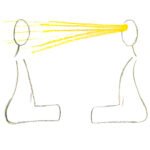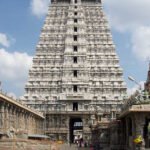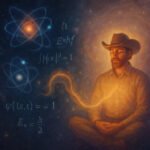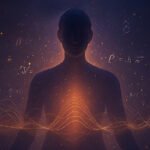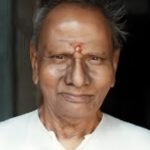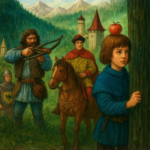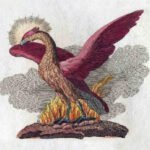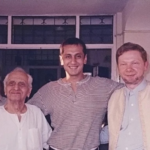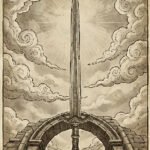April 23, 2018
Ramesh Balsekar – Natural Votary of Peace, ‘Godfather of Soul’, and his Gurus
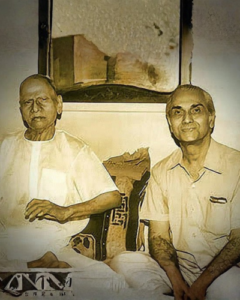
Natural Votary of Peace, ‘Godfather of Soul’, and his Gurus
This article was written by Jaya Nagarkatti, daughter of Ramesh Balsekar, on the occasion of Guru Purnima in 2012. I found it very moving, and asked her if it could be shared with devotees and fans of Ramesh ji. She readily agreed to the same. With gratitude to Jaya, for offering us this intimate glimpse into a sage’s life, one that only a family member could be privy to. Minor edits have been made by me, as I wanted to retain the original flavor of her piece.
‘Remembering my Father’ by Jaya Nagarkatti
Ramesh Balsekar – Natural Votary of Peace, ‘Godfather of Soul’, and his Gurus My Father often talked of three kinds of pain in life: physical pain, psychological pain and financial pain.
After the death of her husband, my oldest friend in Bangalore found herself in dire circumstances – that too after having lived a life of plenty. All of a sudden and in one go, she experienced all the three pains. Shocking let-downs, bad eyesight, poor health, distressing finances and, I remember, she had to deal with her retinal treatments, with the help of a maid, on bumpy rides in auto rickshaws. She waited for money transfers from a child who lived abroad. She would call frequently and talk to me in detail about all that was going on and how she was coping with her issues. However, when it was time to end the call, invariably she would say: ‘Jaya, don’t worry, it is all going on; I am totally at peace.’
I would speak to Father, who knew her well, and he had told me: ‘That is the peace I talk about.’
Our local Sunday newspaper supplement had carried an article about Sri Ramakrishna Paramhansa and the rite that he had performed by making his wife, the deity. He had prayed to her as the Universal Mother, asking for only one thing: Peace. I read out the article to Father over the phone, knowing it would interest him. ‘I wonder what word he could have used for ‘peace’?’ Father said.
We decided that I should speak with a truly remarkable gentleman, Sri S. K. Ramachandra Rao, whom we all admired. The State had awarded him the title of ‘Vidyalankara’. He had reviewed Father’s ‘Experience of Immortality’ soon after it had been published, for the Astrological Magazine.
Sri SKR read Bengali and knew a lot about the Paramhansa. Charming and humble, he was happy to answer our question. ‘Shanti,‘ he had said, and that word was often used and almost chanted repeatedly by him during his talks. When I conveyed this to Father, I could hear him sobbing at the other end of the line. He must have been so moved to know that his ‘Peace’ was a favourite of the Paramhansa as well. Father was emotional and very easily moved. I remember how moved he would be when he spoke of finding answers to his three questions: 1. What is Enlightenment? 2. What will enlightenment do for me for the rest of this life? 3. How will enlightenment help me in daily living?
The answer was confirmed by the Buddha’s three corresponding statements: 1. Events happen, deeds are done: there is no individual doer thereof. 2. Enlightenment means the end of suffering. 3. Samsara and Nirvana are not two. This would bring tears to his eyes. Then he explained clearly what the load of suffering was, and that peace was found in daily living.
Unrelenting in his stress on non-doership, he explained the abhanga: ‘Let Your form remain in my heart and Your name on my lips.’ He would marvel at Gora Kumbhar’s courage in expressing this concept.
During one of his visits to my home, he recalled the words from an abhanga by Eknath. They were: ‘I set out like the Sun and did not find happiness; again and again I returned to Samsara. Four, five, six, they built up to eighteen. Going along with them, the mind became like Shade. All of a sudden… (here, I stressed on the word used – ‘eka- eki’ with amazement and Father was weeping) there was santa-sanga (satsang) and by the grace of Eka’s Janardhan there was release from samsara.’
I remember one afternoon, I was sitting in my parent’s room on my Mother’s bed. She was still in her chair and Father was lying down on the bed next to me. We were all listening to a CD of Kishori’s abhangas. I remembered a chore and came out of the room. A few seconds later, Father came looking for me. He must have quickly got off from the bed and rushed out barefoot. He repeated the words that had moved him so much: ‘avagha to shakuna, hridayi devachey chintan.’ I can translate them at best as: ‘The entire state is of the thought of God in the heart.’ In 2003, Susie had asked me to write something for her. Father was going through the piece, seated in his rocking chair. As I looked at him from afar, he was wiping the tears from his eyes. He must have come to the place where he read the words: ‘Christ’s Father, the Paramhansa’s Mother, Kabir’s Ram and Nityananda’s Om, the Maharshi’s Self, Maharaj’s Consciousness, and my Father’s God, are names they used whenever the Source manifested as Sage, Avdhoot, or Avatar.
Shirish once had asked me if Father had wept at Maharaj’s passing. I said that he must have but I wouldn’t know since I was not present then. I told Shirish that for some years, Father, at the mention of the word ‘Guru’ during his talk, would become choked with emotion.
Several times, Father had said to me: ‘At the end of any discussion, the understanding will bring up the feeling: ‘What does it matter?’’ And my Uncle would imitate Maharaj’s gesture of emptying his fist with a gentle roll of the wrist.
Indeed, the transition from ‘rigorous imprisonment to simple imprisonment’ and ‘happiness through peace of mind’ brings enormous gratitude on this day. ‘It happens.’
Gautam’s recent tribute to Maharaj was beautiful: Maharaj’s words about love – indeed very moving.
I feel that the love was truly total acceptance: an embracing of ‘what is’.
In the earlier quoted abhanga there is a mention of the ‘ability to give embrace gradually’ – ‘detaa aali mithi saavakashi’. It is about the loosening of the ‘knot’, the ‘granthi’ that Bhagwan explains as bondage. He says it is the connection between the body and the self.
The subject of the sage’s appearance was also interesting. I have found that in comparison to the look of the sage in his younger days, the older ‘look’ is more strikingly attractive in all the cases, be it Ramana Maharshi , Swami Nityananda, or my Father.
Maharaj, as I remember him, sat with a straight back and piercing stare that intermittently changed to a self-abiding state. I was charmed; never afraid. There was the ‘love’, you see?
Ramana Maharshi’s most popular photograph is known as ’The Welling Bust’. The Wellings of Belgaum and Bangalore were well known photographers. The son of the man who shot this world-famous picture was visiting me along with an Uncle. Over lunch, he told us of the day this picture was taken. This happened a year before the death of Bhagavan’s body. The Maharshi had hitherto discouraged people from taking His pictures. That afternoon, however, when He saw the photographer, He said, ‘Do you wish to take a picture? Take it.’
Sri Welling began to focus his Roliflex lens. It was late afternoon, and he heard the Maharshi say: ‘Is the light enough?’
‘Bhagavan, You Are the Light’ was his reply as he clicked, and thus came into being the portrait of a divine personality that ‘had eyes like moonbeams’.
As usual, I told my Father about this wonderful narration by the photographer’s son. ‘He must have known that a picture would be needed by the world, thereafter,’ Father had said.
In the decade before their passing, I visited my parents very often. ‘You must come every six months and Subodh must come every six months.’ Father had said. ‘That way one of you will be here every quarter.’
I happened to go more often than that. I would usually arrive around 3 pm and find Father watching a sporting event on TV in the living room. I would call out to him from the door and he would rise from his chair and then we would go into their room where Mother would be waiting. Those were golden days for me and for many others like me.
July 2008. Guru Purnima. He is wearing a Tirupati Balaji ‘Prasad’ shawl sent for him by my friend from Bangalore. He is very weak after his surgery, but ready to oblige for a request to pose. Last year, I started going through a large collection of DVDs sent to me over three years. I meant to watch every single one and put aside those that I felt were the best. I had seen them all before; each one as soon as it arrived. However, this screening was very different. The flowers that were arranged and placed behind him every day, stood out. Their beauty and variety; the constant softness of the brass Buddha that existed ever since I was born, and Father’s changing physical condition were so noticeable. On this day, his voice seemed stronger; there was much joy and, as it turned feeble in late December 2008, there was a certainty of the end. I remembered Rohit bhai’s words: ‘The sunset has set in.’ I watched.
This is a letter Father had received in the past; it reminds me of the glory of the days of satsang at Sindhula:
‘And the long awaited day of our meeting with you arrived. After the initiatory questions: where, when and why, you gracefully and unceremoniously dealt the coup de grace to any and all of my faithful convictions of long standing. They didn’t even have time to rear their heads one last time.’
“Michael does not have an ego; Michael is the ego.” And I knew. In that knowing, nothing old could be carried over. Only joy and peace remained with me, and I knew: “This is who I am. This is who I always was.” Cherished spiritual concepts (cherished, but not truly investigated or questioned) melted away with each word of what is real nectar or ambrosia, flowing from your lips.
Such relief – massive mountains of guilt, sin and shame had accumulated; now they were gone. Such sweet words of clarity, of soundness, and your conceptual tools, left nothing unsolved or untested. After satsang, over a cup of tea in Colaba, my wife said into the silence: “That was the final teaching.” She was so right.
After some time, I felt the need to write to you recounting my experience, the letter ending with a plea that I might consider you my Guru. You answered me very graciously: “If you have chosen me as your guru, I have no say in the matter.” I was crying with relief and, in that very instant the guru-disciple relation vanished. From then on there was never any two – only One.
Since then, life has been simple: marveling at the unfolding of the Source and being devoted to what I am doing in the moment. Events happen and since no doer can be found, not in this ‘persona’, this ‘mask’, and also not in fellow creatures, these events are experienced as happening gracefully.
Four years ago, we saw you again only for the sweet enjoyment of seeing again the adorable and most cherished ‘key bearer’ of my heart. It is a small, even insignificant key that you hand out, but it is a ‘master key.’ It works for the whole building.
Now that we are in your presence, though no ‘Thank you’ is required, you can’t help being such a compassionate bestower of keys – still, my beloved satguru, my Self: Thanks. – Michael’
After the brilliant renovations at ‘10 Sindhula’, Akshata has displayed pictures of my parents in the new dining area. They are not the usual smiling photographs we commonly see. In these, both my parents are laughing and it is wonderful to remember them like that.
There is truly nothing more one can ask for.
 Nothing and the Centaur
Nothing and the Centaur Guest Blog – Arunachala Girivalam by Vikrant Rawa
Guest Blog – Arunachala Girivalam by Vikrant RawaMarch 8, 2024
 Guest Blog – The Light of the Guru by Priya Tandon
Guest Blog – The Light of the Guru by Priya TandonOctober 1, 2024

 On The Occasion of Guru Purnima 2025
On The Occasion of Guru Purnima 2025July 28, 2025


 The End of Duality
The End of DualitySeptember 20, 2020
 Advaita and the Energy Body
Advaita and the Energy BodySeptember 14, 2020
 True Apperception
True ApperceptionApril 25, 2019
 The World’s Best Astrologer
The World’s Best AstrologerSeptember 7, 2018
 Nisargadatta and the funeral of death
Nisargadatta and the funeral of deathSeptember 3, 2018
 Ramesh Balsekar – Destiny’s child is 90
Ramesh Balsekar – Destiny’s child is 90May 3, 2018

 Maharaj and the Trojan Horse of Conscious Presence
Maharaj and the Trojan Horse of Conscious PresenceAugust 11, 2015

 Consciousness and the Fenix
Consciousness and the FenixNovember 17, 2011
 Consciousness and the Now
Consciousness and the NowFebruary 2, 2011
 A Double-edged Sword
A Double-edged SwordJuly 3, 2010
 Spending no time with Eckhart Tolle
Spending no time with Eckhart TolleApril 3, 2010


